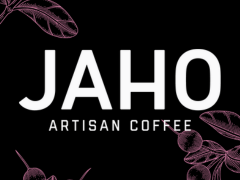By John Gruber

Jaho Coffee Roaster:
Great coffee is a gift.
20% off with code: DF
Magic
Monday, 25 April 2011
As a nearly utter digression from the main thrust of Dave Wiskus’s aforelinked piece regarding Tweetbot and how UI designers are, in a sense, like stage magicians, I want to comment on this bit where Wiskus describes his distaste for the app:
While my friends were all heaping praise on the interface and interaction design of this new app, I couldn’t help but cock my head a little at some of the decisions. Tap and hold for popup tab-bar things? Triple-tap? Non-standard table cell behavior? This felt like something alien. Like an Android app.
After I praised Tweetbot, a slew of DF readers tried the app, and reaction was — unsurprisingly — mixed. The Tapbots aesthetic — and all of their apps share the same strongly branded, very-consistent-but-only-with-their-sibling-Tapbots-apps aesthetic — is inherently divisive. I don’t love it, and I find it tiresome in an app I use as frequently as I do my iPhone Twitter client. But I do appreciate it, both for its quality and attention to detail, and for its depth.
Many DF readers clearly love it. Those readers who emailed me to complain about it, though, often echoed Wiskus’s remark: that it feels “like an Android app”.
I’m pretty sure none of the people saying this have used an Android device extensively.
What Wiskus meant wasn’t that the Tapbots aesthetic feels like Android actually feels, but rather that it feels foreign to iOS — more like an app for some other platform. The Tapbots aesthetic might be what iOS users imagine Android feeling like — helped, in no small part, by their “bot” gimmickry, the elaborate conceit that each of the Tapbots apps is a robot designed for a certain task. But in fact there’s nothing android-like about the actual Android UI. Unlike the bot-ness of the Tapbots oeuvre, which is taken as the literal muse for the entire UI, there is no such element in the Android UI.
So on the one (hypothetical) hand, the Tapbots aesthetic could, in theory, serve as a very apt and well-designed aesthetic for an entire mobile platform named “Android”. But, on the other (reality-based) hand, Tweetbot might well bear the least resemblance to actual Android software of any iOS app I’ve ever used.
There’s no denying that Tweetbot has a distinctive feel to it. The Tapbots aesthetic isn’t so much UI-designed as art-directed. They take things so far with regard to how everything on screen looks, sounds, and moves that their apps feel as much like games as they do actual tools. Using Tweetbot is like playing a game of Twitter. That’s exactly what some love, and others don’t.
The real Android has a system-wide UI aesthetic with little personality, and no soul. I’ve twice spent a month using Android full-time (or nearly so) — with the Nexus One a year ago, and with the Nexus S this past December. I tried every Android Twitter client I could find. My favorite, or at least one of them, was Plume (née Touiteur). In addition to being a serviceable, useful Twitter client, I believe it fair to describe Plume’s UI as being among the best Android has to offer. That this is so exemplifies the gaping chasm between iOS and Android in terms of aesthetic design. It’s hard to imagine Plume garnering any attention whatsoever on iOS. You’d have to be both blind and deaf to find any similarities between Plume (or other leading Android Twitter clients) and Tweetbot. Plume’s appeal is almost entirely functional, for better or worse (and let’s be honest and admit that there exist many people who find anything other than a purely-functional interface and emphasis to be distasteful, i.e. people who truly do prefer the Android experience and mindset, and who, I suspect, would hold up Tweetbot as the epitome of everything wrong with both iOS and with iOS users).
In a sense, then, perhaps there is something droid-like about the Android user experience. Not in the artistic, warm, humanist way that the Tapbots aesthetic is bot-like, but in the cool, rational, science-not-art, thinking-as-opposed-to-feeling sense of artificial intelligence. The difference between iOS and Android, design-wise, can be summed in a single word: magic. iOS aims for it. Android doesn’t want it.
| Previous: | Cutting That Cord |
| Next: | Wolf! |
